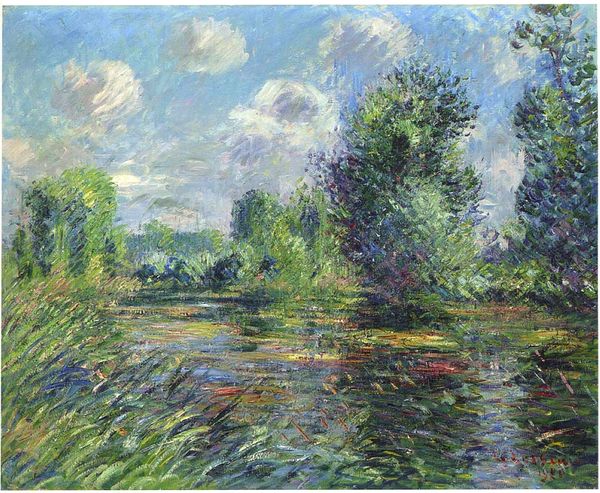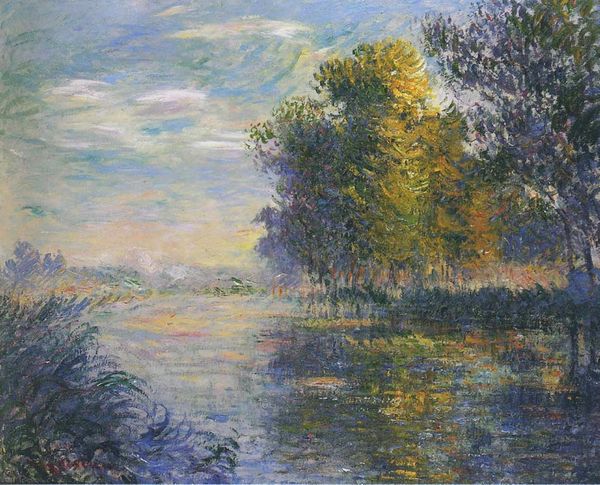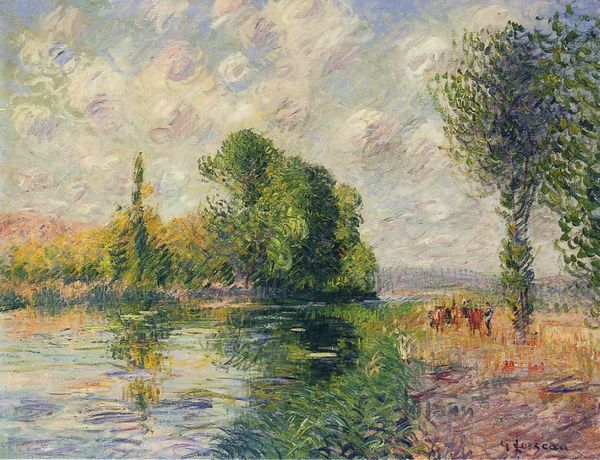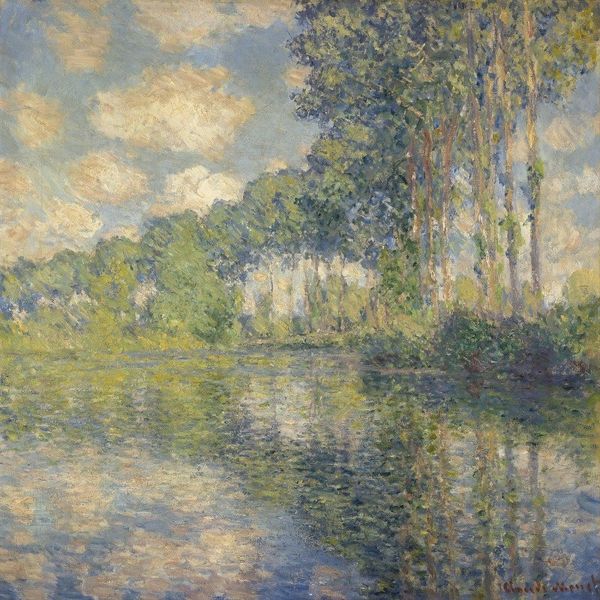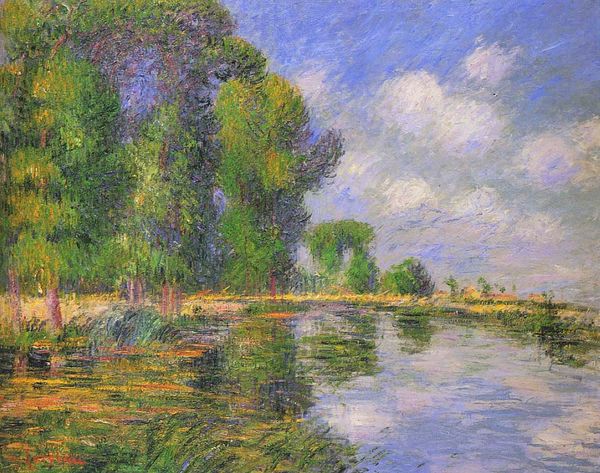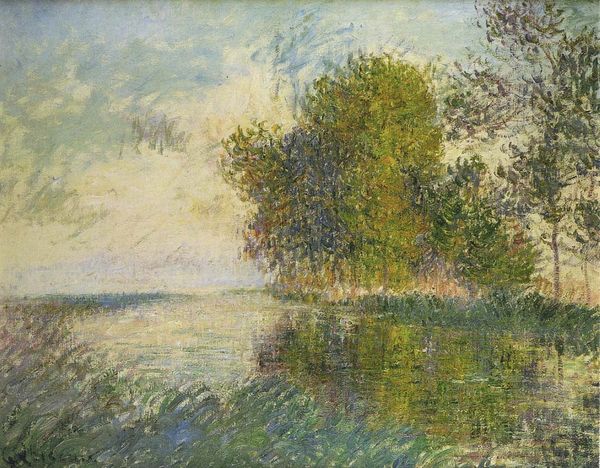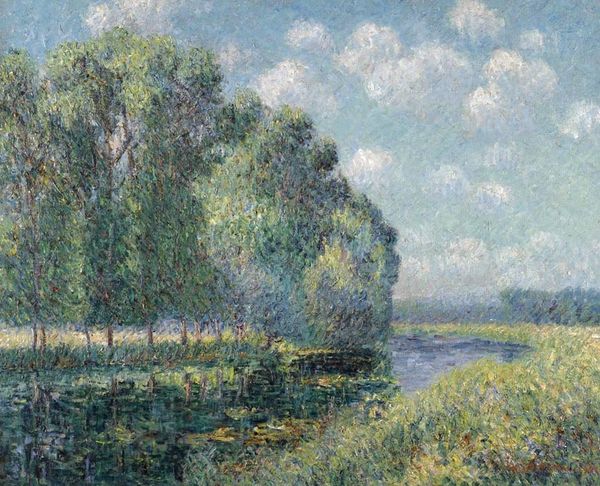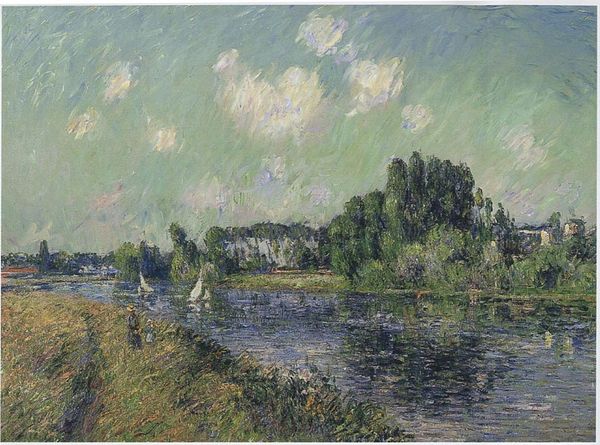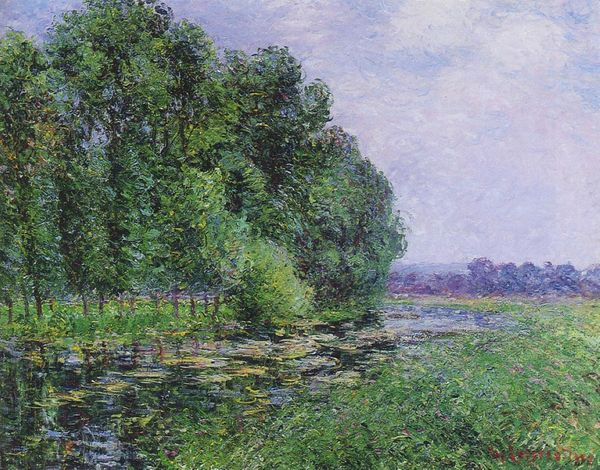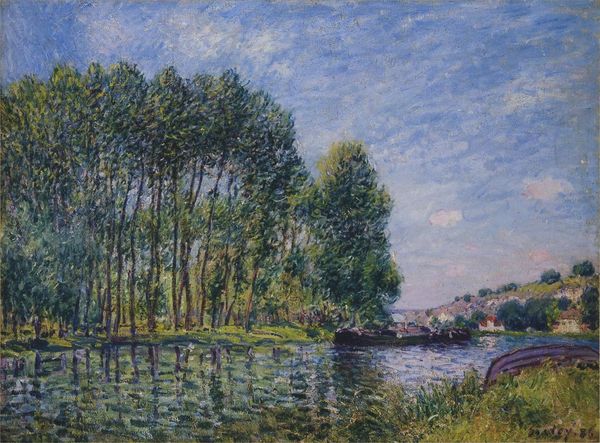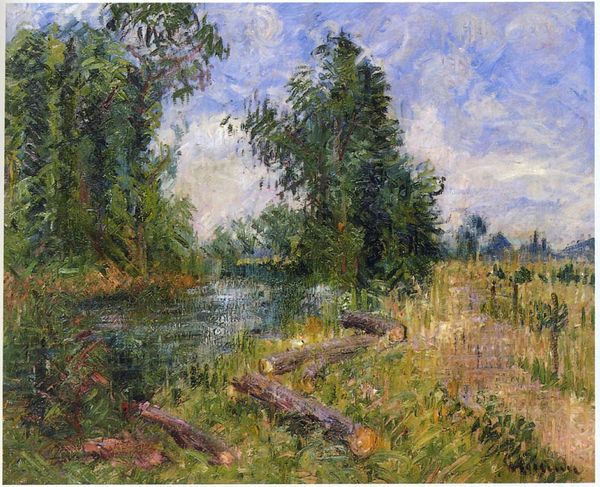
Copyright: Public domain
Curator: Here we have Gustave Loiseau’s oil on canvas painting, "By the Eure River in Summer," created in 1902. Editor: It feels incredibly peaceful, doesn't it? The dense foliage and soft colors give it such a tranquil mood, and how the brushstrokes catch the light…it’s dreamy. Curator: Absolutely. Note how Loiseau employs short, broken strokes. This technique, typical of Impressionism, helps to dissolve solid forms and capture the transient effects of light and atmosphere on the riverbank. Editor: I wonder how different places depicted in art have shaped public perceptions and representations of regional identity? The tranquil impression of the landscape evokes the countryside as a peaceful escape from city life, so it's an appealing view that would promote this particular lifestyle. Curator: It also serves a semiotic function, consider the texture achieved, what that brushwork communicates— the cool, damp air of a late summer day by the river. Loiseau masterfully utilizes a palette dominated by greens and blues, punctuated by yellows, creating a harmony that guides the eye. Editor: Indeed. Looking at the location itself, what impact does art that highlights this part of France have? What might local politicians gain or exploit from promoting such bucolic imagery? Curator: One could even say Loiseau, in his depictions of natural and urban environments, created almost a pastoral revision of daily French life in his time, and further emphasized it in galleries to further shape public taste and appreciation of Impressionism. Editor: It's a powerful reminder of how images shape our collective memory. Now I wonder what future art historians will make of *our* preferred landscapes! Curator: A fine point! Viewing Loiseau's careful interplay of light and shadow will always be more than just appreciating the beauty, of how brushstrokes render the scene before us. It’s about seeing through his lens.
Comments
No comments
Be the first to comment and join the conversation on the ultimate creative platform.
